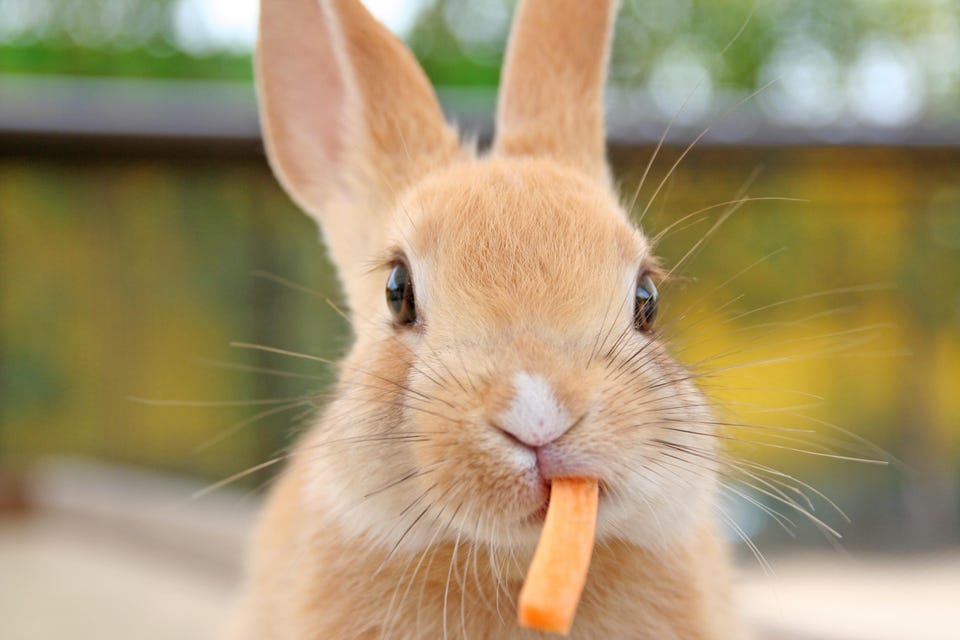Healthcare Rabbit Hemorrhagic Disease Virus Type 2 Kills 14 Animals In Connecticut Bruce Y. Lee Senior Contributor Opinions expressed by Forbes Contributors are their own. I am a writer, journalist, professor, systems modeler, computational and digital health expert, avocado-eater, and entrepreneur, not always in that order.
Following New! Follow this author to stay notified about their latest stories. Got it! Sep 14, 2022, 09:45pm EDT | New! Click on the conversation bubble to join the conversation Got it! Share to Facebook Share to Twitter Share to Linkedin The spread of the Rabbit Hemorrhagic Disease Virus Type 2 (RHDV2) ain’t good news for rabbits. .
. . [+] (Photo: Getty) getty Talk about a bad hare day.
On September 6, the Connecticut Department of Agriculture had received a report that 13 of 14 rabbits at a private residence in Hartford County, Connecticut, had suddenly died. The rabbits presumably were living in a human’s private residence and didn’t have their own house. That day, tissue samples from the rabbits had been sent to the U.
S. Department of Agriculture (USDA) Foreign Animal Disease Diagnostic Laboratory. Two days later, the 14th rabbit ended up dying.
And on September 11, laboratory testing confirmed that the culprit in this rabbit tale was the Rabbit Hemorrhagic Disease Virus Type 2 (RHDV2). This is a very bad virus to get if you happen to have long ears, large eyes, and a fluffy tail. It is very contagious and can lead to a whole host of problems including fever, lack of appetite, respiratory problems, neurological issues, internal bleeding, anemia, and, yes, sudden death.
Anything with the word “hemorrhagic” in it is typically bad whether it is a hemorrhagic disease, a hemorrhagic velour track suit, or a hemorrhagic burger. “Hemorrhagic” means that bleeding is involved. and RHDV2 can lead to bleeding in different parts of the body that ultimately becomes difficult to control.
Thus, if you are a rabbit, you should be all ears about the threat of this virus, whether your a wild or domestic rabbit. This virus can end up killing you in a fast and furriest manner. Although this virus isn’t super common, this isn’t the first appearance of RHDV2 in the U.
S. The virus has already appeared in domestic rabbits in other states, including New Jersey, New York, and various states in the southwestern U. S.
And On August 17, the state of Wisconsin’s Department of Agriculture, Trade and Consumer Protection announced that the state found its first cases of RHDV2 in three domestic rabbits located in La Crosse County. Now, if you happen to be human instead (and most likely you are since you are reading Forbes ), then you currently can’t catch RHDV2. This doesn’t mean you should simply say, “Silly rabbits,” and not take any precautions.
If a random rabbit knocks on your door or wants to paw-deliver a package to your rabbits, don’t just let that random rabbit hop inside. Any unfamiliar rabbit could be carrying the virus. Rabbits may not be very good at telling you that they don’t feel that well.
And like some humans, they ma conceal the fact that they came into close contact with someone who’s been ill. Therefore, it’s better to keep any new rabbit separate from your other rabbits for at least 30 days. If any visitors want to handle your bunnies (which by the way is not a euphemism for something else), have them wear protective gear such as coveralls, shoe covers, hair covering, and gloves.
In this case, “them” refers to the visitors and not the bunnies. It’s very difficult to get bunnies to wear shoe covers since you have to first get them to wear shoes. MORE FOR YOU CDC: Salmonella Outbreak Has Left 279 Ill, 26 Hospitalized In 29 States Canadians End Up In ICU After Attending ‘Covid Party’ White House Mandates Pfizer Vaccines for Millions of Citizens .
. . Before the FDA Clinical or Safety Reviews Have Been Made Public Make sure that you thoroughly wash your hands with warm soapy water before and after handling .
. . [+] rabbits or anything that the rabbits touched.
Clean and disinfect anything the rabbits may have touched as well. (Photo by Omar Marques/Anadolu Agency via Getty Images) Anadolu Agency via Getty Images Moreover, make sure that you thoroughly wash your hands with warm soapy water before and after handling rabbits or anything that the rabbits touched. Lather up with soap for at least 20 seconds, which is about how long it takes to get through the first verse of Jefferson Airplane’s “White Rabbit.
” Clean and disinfect anything the rabbits may have touched as well. Remember rabbits aren’t great at cleaning after themselves. Then there’s the vaccine.
Some states such as Connecticut and Wisconsin have already approved the sale of a RHDV2 vaccine that’s received Emergency Use Authorization from the USDA’s Center for Veterinary Biologics. So you may want to speak to your veterinarian about getting your rabbit vaccinated against RHDV2. One challenge is that there is no test to tell whether your rabbit has been vaccinated versus preciously infected with the virus.
Asking your rabbit about prior vaccination is likely to get a “when are you going to feed bananas” stare from your rabbit. Therefore, your vet, or rather the rabbit’s vet, will have to have some means of keeping track of rabbits that have been vaccinated. Meanwhile, authorities in Connecticut have continued to try to pinpoint the source of this RHDV2 outbreak.
They’ll want to contain this virus as soon as possible. Or risk facing a receding hare line. Follow me on Twitter or LinkedIn .
Check out my website . Bruce Y. Lee Editorial Standards Print Reprints & Permissions.
From: forbes
URL: https://www.forbes.com/sites/brucelee/2022/09/14/rabbit-hemorrhagic-disease-virus-type-2-kills-14-animals-in-connecticut/



